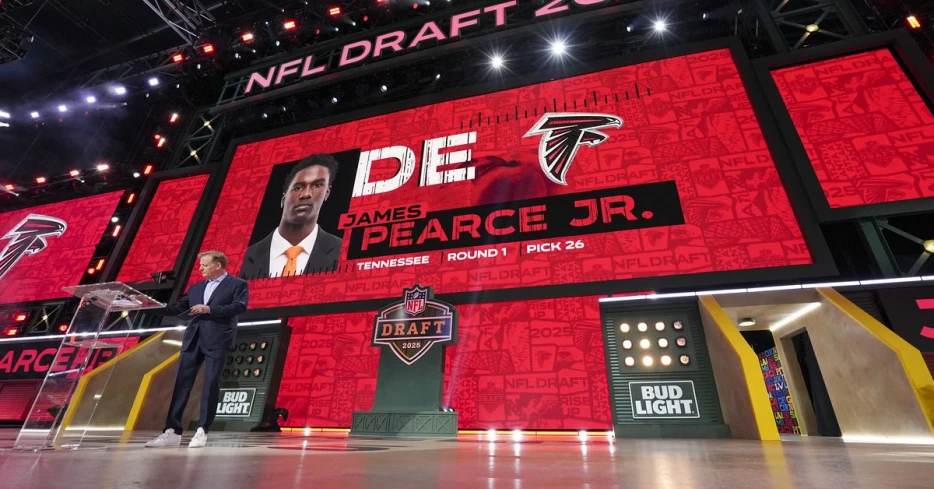
 The Falcoholic
The Falcoholic
Why Pearce? Why Walker? This breaks it down nicely.
We know the broad contours of how the Atlanta Falcons landed Jalon Walker and James Pearce, a haul destined to be the subject of hype and criticism for years to come. Sports Illustrated’s Albert Breer fills in many of the missing details in his latest column.
For those with tired eyes, the crux of the article is this: The Falcons spent quite a bit of time trying to dig into whether Pearce was as difficult as he was reputed to be, were impressed that despite pouring rain the prospect was pushing hard to still go ahead with a workout and find a space to do so himself, and came away excited about him. Breer also adds to the raft of confirmations that the Falcons would have taken Pearce at 15, but were surprised Jalon Walker fell to their pick and couldn’t pass him up.
Lengthy block of Breer’s article incoming:
Because of all that, they were ready to take (Pearce) at No. 15.
Then came the twist they didn’t expect, where Jalon Walker, who could’ve gone as high as No. 4, started falling. And when the Indianapolis Colts chose to pick at No. 14, and not trade, Atlanta’s draft room erupted before even hearing Tyler Warren’s name. Walker impressed the Falcons as he had just about everyone else—every Georgia player told the brass, when asked what teammate they’d bring with them to the pros, that Walker would be the guy. And Walker impressed Fontenot when he came to Atlanta’s local pro day to cheer on friends working out there.
Morris has already had some success deploying another hybrid, in seventh-year pro Kaden Elliss, and envisions using Walker in a supersized version of that role.
That last note is interesting, even if I suspect we’ll see Walker used much more off the edge than as an off-ball linebacker. But it’s clear the Falcons tried to replicate their efforts last year with greater success, where they got their top target (Michael Penix in 2024, Walker in 2025) and then tried to come back up for a pass rusher (Laiatu Latu in 2024, Pearce in 2025). The fact that Pearce might be a better fit than Latu makes last year’s miss perhaps a blessing in disguise, while also providing fuel for those who argue the team shouldn’t be in the business of giving up future firsts.
What is obvious—and what Breer writes—is that the Falcons considered Walker and Pearce to both be top talents in this class, and were hellbent on getting both when it was evident they were going to fall. The Falcons paid a premium price for doing so, but Breer writes that the team essentially considered this getting a second first rounder a year early, which reinforces just how high they were on Pearce. They called the Broncos at 20 but wound up finding a partner at 26 with the Rams, who were willing to toss...